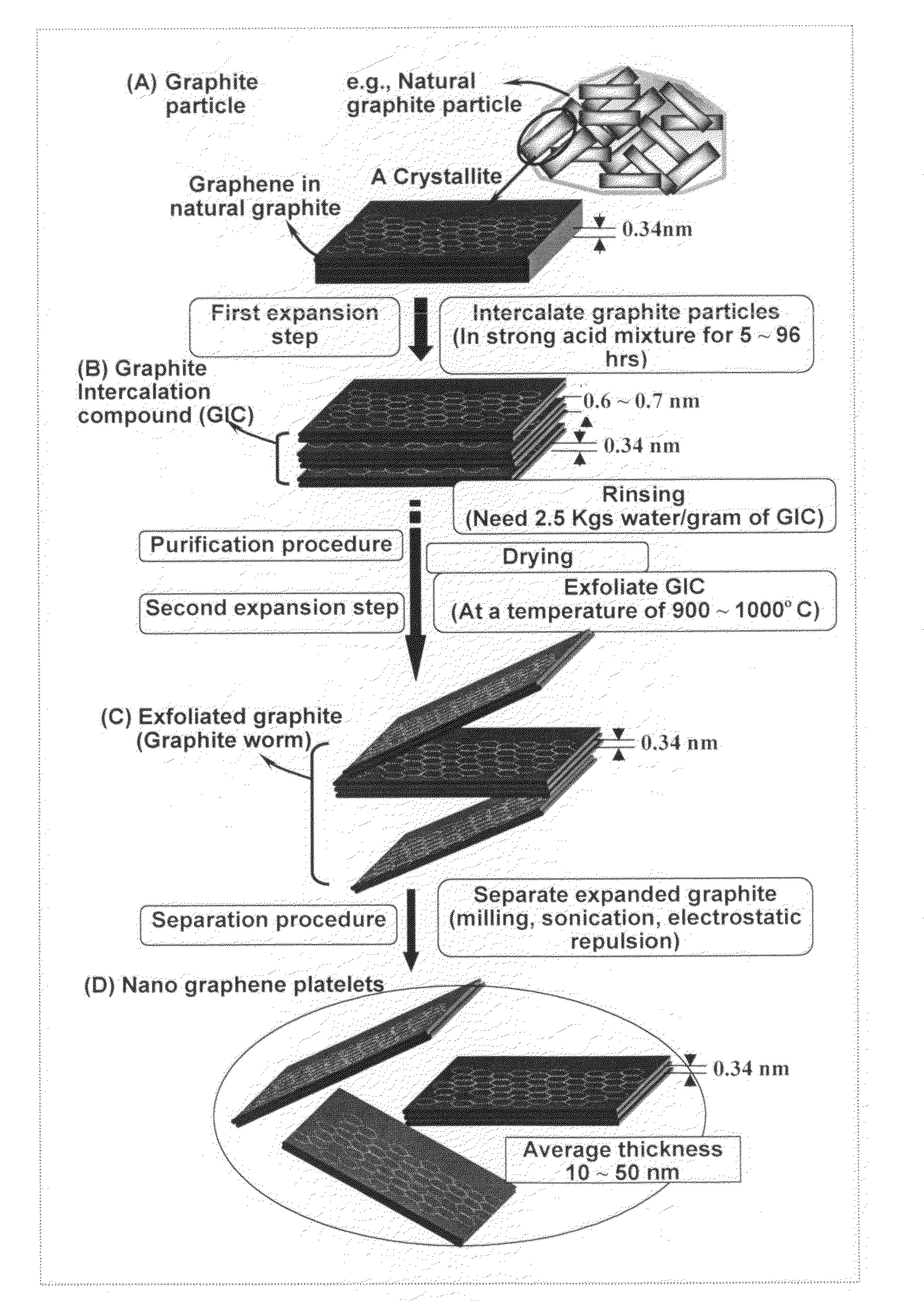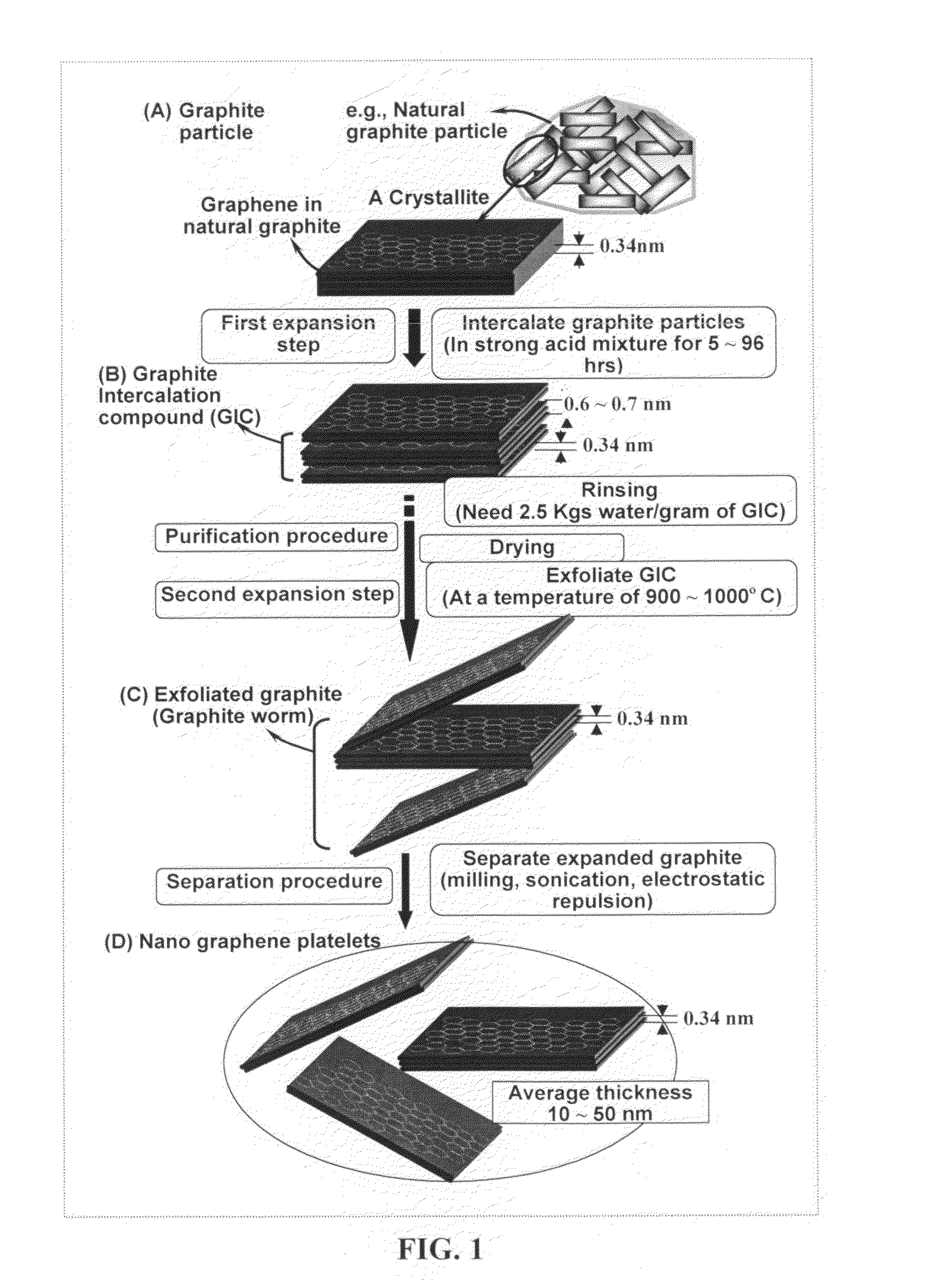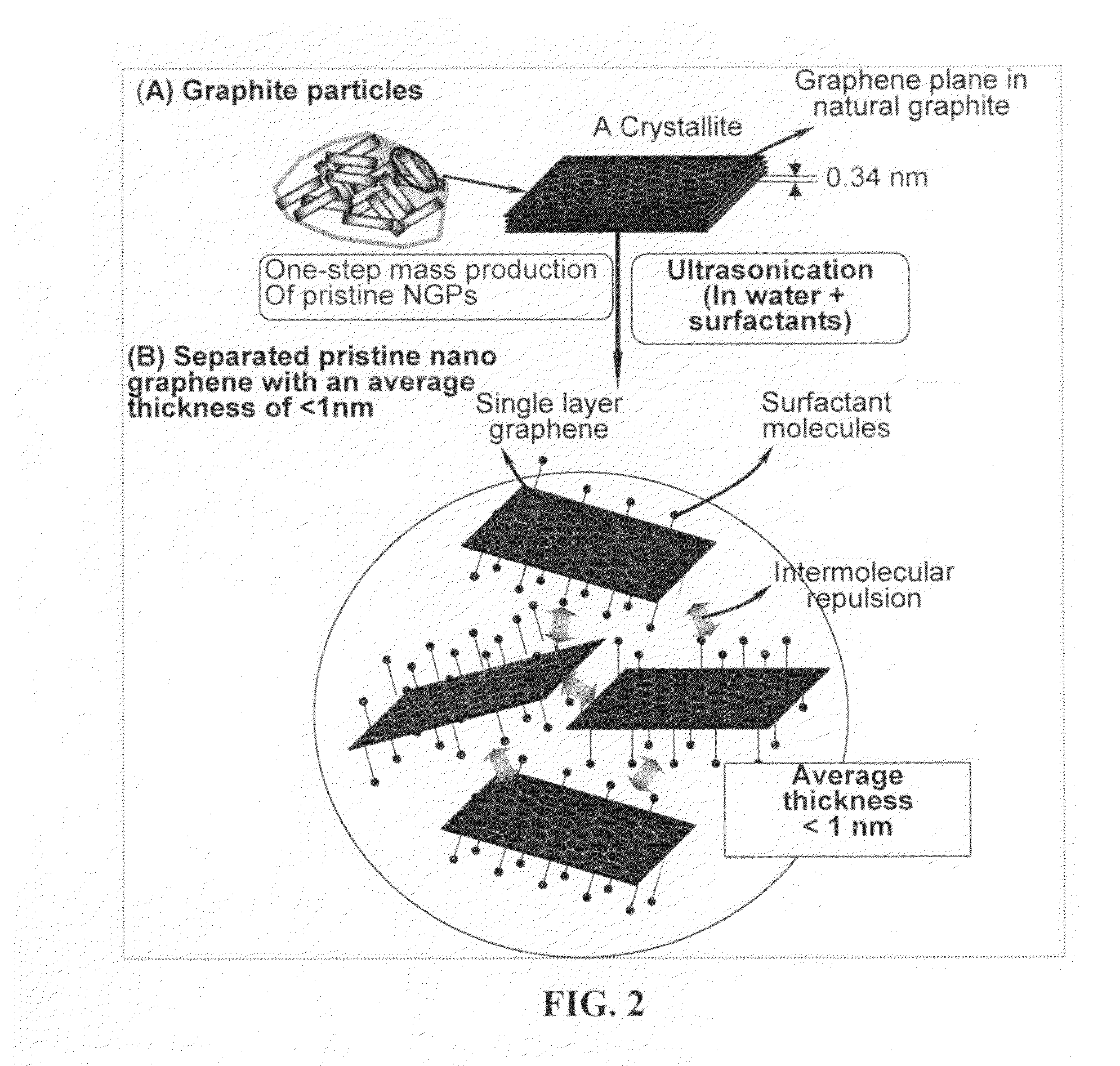Nano graphene-modified lubricant
a technology of graphene and lubricant, which is applied in the direction of additives, lubricant compositions, base materials, etc., can solve the problems of poor heat transfer effect, inability to realize the potential to use graphite as a heat transfer-enhancing agent in this oil, and strong tendency of graphite incorporated in the automotive engine oil to settle in the fluid, etc., to achieve the effect of modulating viscosity
- Summary
- Abstract
- Description
- Claims
- Application Information
AI Technical Summary
Benefits of technology
Problems solved by technology
Method used
Image
Examples
example 1
Pristine Nano-Scaled Graphene Platelets (NGPs) Prepared by Direct Ultrasonication of Natural Graphite Particles
[0097]Five grams of graphite flakes, ground to approximately 20 μm or less in sizes, were dispersed in 1,000 mL of deionized water (containing 0.1% by weight of a dispersing agent, Zonyl® FSO from DuPont) to obtain a suspension. An ultrasonic energy level of 85 W (Branson S450 Ultrasonicator) was used for exfoliation, separation, and size reduction for a period of 2 hours. The resulting suspension contains a huge number of ultra-thin graphene sheets floating in water. These nano graphene sheets were collected by spray-drying. TEM examination of the dried NGPs indicates that most of these NGPs had 1-5 graphene layers.
example 2
Exfoliation and Separation of Graphite Oxide
[0098]Graphite oxide was prepared by oxidation of graphite flakes with sulfuric acid, nitrate, and permanganate according to the method of Hummers [U.S. Pat. No. 2,798,878, Jul. 9, 1957]. Upon completion of the reaction, the mixture was poured into deionized water and filtered. The graphite oxide was repeatedly washed in a 5% solution of HCl to remove most of the sulphate ions. The sample was then washed repeatedly with deionized water until the pH of the filtrate was neutral. The slurry was spray-dried and stored in a vacuum oven at 60° C. for 24 hours. The interlayer spacing of the resulting laminar graphite oxide was determined by the Debey-Scherrer X-ray technique to be approximately 0.73 nm (7.3 Å).
[0099]Graphite oxide was then inserted into a quartz tube at a temperature of 1,050° C. for 60 seconds under a flowing nitrogen condition to obtain exfoliated graphite oxide. The exfoliated graphite oxide was then ultrasonicated in water (n...
example 3
Graphite Nanoparticles Prepared from Natural Graphite
[0100]Natural graphite particles approximately 10 μm in size, along with small stainless steel balls, were sealed in two chambers of a high-energy ball mill. Ball milling was allowed to proceed with a small amount of graphite particles being sampled out every 12 hours or so to monitor the particle size. After approximately 96 hours, the average graphite particle size was found to be approximately 380 nm. Approximately 120 grams of graphite nanoparticles were prepared.
PUM
 Login to View More
Login to View More Abstract
Description
Claims
Application Information
 Login to View More
Login to View More - R&D
- Intellectual Property
- Life Sciences
- Materials
- Tech Scout
- Unparalleled Data Quality
- Higher Quality Content
- 60% Fewer Hallucinations
Browse by: Latest US Patents, China's latest patents, Technical Efficacy Thesaurus, Application Domain, Technology Topic, Popular Technical Reports.
© 2025 PatSnap. All rights reserved.Legal|Privacy policy|Modern Slavery Act Transparency Statement|Sitemap|About US| Contact US: help@patsnap.com



